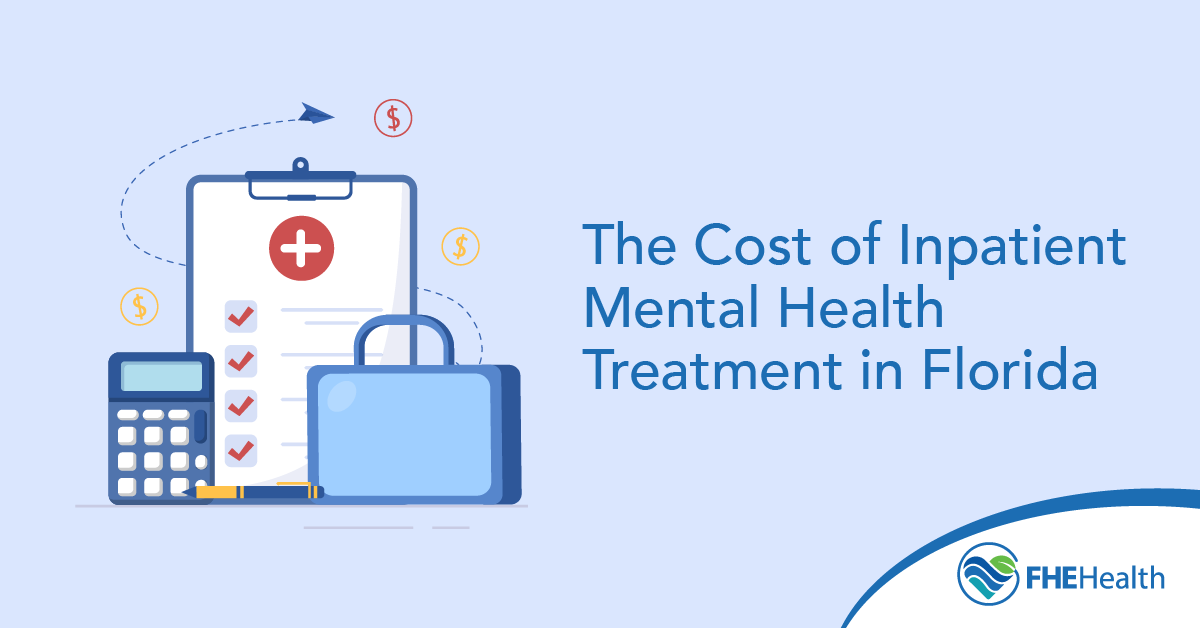
According to a 2022 study in the Journal of Managed Care and Specialty Pharmacy that looked at over 400,000 adults living with clinical depression, a stay in an inpatient rehab center costs around $15,941. However, the average inpatient treatment cost with insurance can often be lower, depending on the individual’s coverage and the services they need.
In this article, we take a closer look at the factors that affect inpatient costs, along with self-pay options, low-cost solutions and how to verify insurance coverage.
What Factors Affect the Cost of Inpatient Treatment?
How much a mental hospital costs depends on a variety of factors, including:
- The length of stay and level of care. Long-term psychiatric care typically costs significantly more than short-term stabilization. Similarly, an individual who requires the close monitoring and interventions that intensive care units provide can expect to pay higher long-term mental health costs than someone staying in a general inpatient treatment program.
- Facility type and location. Fees in private rehabs exceed the cost of state-funded rehab services, but the scope of services may differ depending on a state-funded institution’s access to funding. Urban treatment centers have higher overhead costs and see a greater demand for services, so they generally charge more than rural centers.
- Services and amenities provided. High-end facilities often have resort-style amenities and come with a higher inpatient cost than standard care centers. An individual’s personal treatment plan may incorporate one-on-one and group therapy sessions and medication management, further impacting expenses.
- Staff credentials and treatment approaches. High-quality rehab centers have licensed therapists on staff and use evidence-based treatments, such as cognitive behavioral therapy and dialectical behavior therapy. As a result, treatment generally costs more than in centers that rely on paraprofessionals and offer more generalized care.
How Insurance Typically Covers Inpatient Mental Health Care
For those with major health insurance plans, their policies’ coverage for mental health services can significantly reduce out-of-pocket costs and make care more accessible.
- Understanding Mental Health Coverage Under Major Insurance Plans
The average inpatient treatment cost with insurance depends on the type of coverage someone has and where they receive care. For example, HMO and EPO plans both require you to see in-network providers and typically don’t cover services you receive from mental health providers outside your network. PPO plans let you receive care outside your health insurance carrier’s preferred network of providers, but you can expect to pay a greater portion of the costs. - Cost-Sharing Obligations and Inpatient Treatment Costs With Insurance
Some health insurance plans have deductibles, which are the amount you pay out of pocket before your coverage begins. For private health insurance, this may range from $1,500 to $2,500, depending on the policy — more for those with high-deductible plans. In addition to the deductible, you may also have to pay a coinsurance (a percentage of the cost) or a flat co-pay to cover part of your care. - Medicare and Medicaid Coverage
Medicare and Medicaid provide coverage for long-term mental health costs, including inpatient rehab. These plans are administered by the federal and state governments, respectively, and have eligibility rules based on factors such as age, residency and financial need.
Self-Pay Options and What to Expect Financially
Self-pay rehab may be an option for those without health insurance or who want to go to a rehab center that doesn’t accept their policy. While this puts the entire cost burden on the individual, many facilities have strategies to help make care affordable.
Typical Daily Rates
When projecting daily rates for inpatient care, it’s important to remember that fees vary widely across centers. Federally reported Medicare rates show an average of $1,150 per day for basic inpatient psychiatric care and up to $1,600 per day for those who need more intensive care. However, clinics often have different fee schedules for self-pay clients.
Payment Plans and Financing Options
To help clients access the support they need, many rehab centers offer flexible payment plans that let the individual pay for services in monthly installments. Those who can pay the entire amount up front may be able to get a discount on treatment. Other centers have sliding scale fees based on household income.
State, Local and Nonprofit Programs That Offer Free or Low-Cost Care
Many states have a range of state-funded and community-based options for those seeking low-cost inpatient treatment. For example, in Florida, the Department of Children and Families provides behavioral health services to residents with low incomes or no health insurance. This includes access to crisis stabilization units.
Some counties nationwide have free or low-cost mental health treatment services through local programs and emergency services. Additionally, nonprofit organizations and regional mental health coalitions provide crisis intervention, referrals and support groups. These resources can help individuals navigate their care options.
Why Inpatient Treatment Is an Investment in Long-Term Health
While it often comes with a monetary commitment, inpatient treatment is a valuable investment in your long-term health and quality of life. From helping prevent more serious crises in the future to offering an immersive healing environment, this level of care provides comprehensive support that addresses immediate symptoms and underlying issues.
Inpatient treatment offers improved outcomes by reducing suicide risks and hospitalization rates while supporting better compliance with treatment plans. It may also give the individual access to a higher degree of post-discharge support, helping them continue to pursue wellness while they readapt to everyday life. Though the inpatient cost may seem high, it’s a worthwhile investment in long-term stability.
How to Verify Coverage and Explore Financial Options
For most people, using health insurance to cover a portion of inpatient rehab costs is the most financially viable way to access care. At FHE, we can help you verify your health insurance coverage if you aren’t sure what services your plan includes.
Steps to Confirm Your Mental Health Benefits
To verify the inpatient treatment cost with insurance, start by contacting your insurance provider and carefully reviewing your Summary of Benefits. Ask specific questions about inpatient mental health coverage, including deductibles, co-pays and limits.
Talking to a Treatment Center About Payment
When speaking with a treatment center, have your insurance card, diagnosis and income information ready. Request pretreatment financial counseling and ask for a detailed cost estimate to understand how much a mental hospital costs. Additionally, case managers or billing advocates at treatment centers and nonprofits can provide valuable support, helping you navigate bills and reduce unexpected expenses related to care.
At FHE, we specialize in helping individuals access the services they need, even if they don’t have insurance. Contact us today to speak with an advisor about your options.






